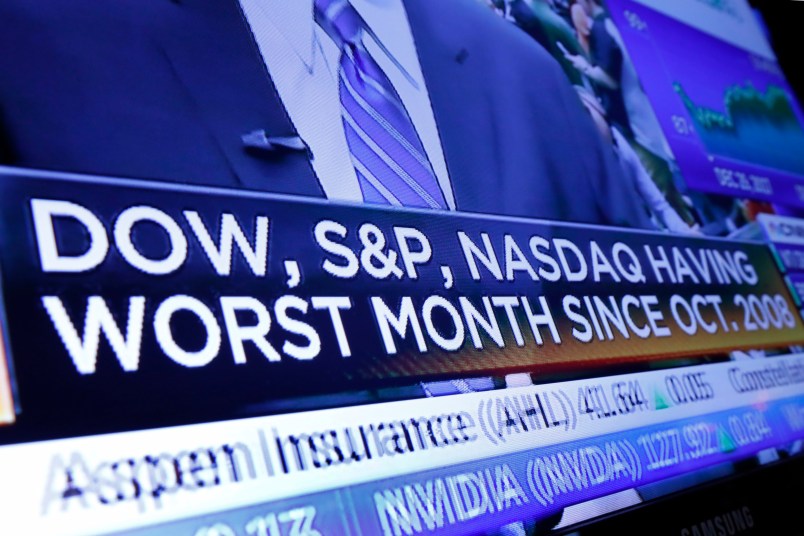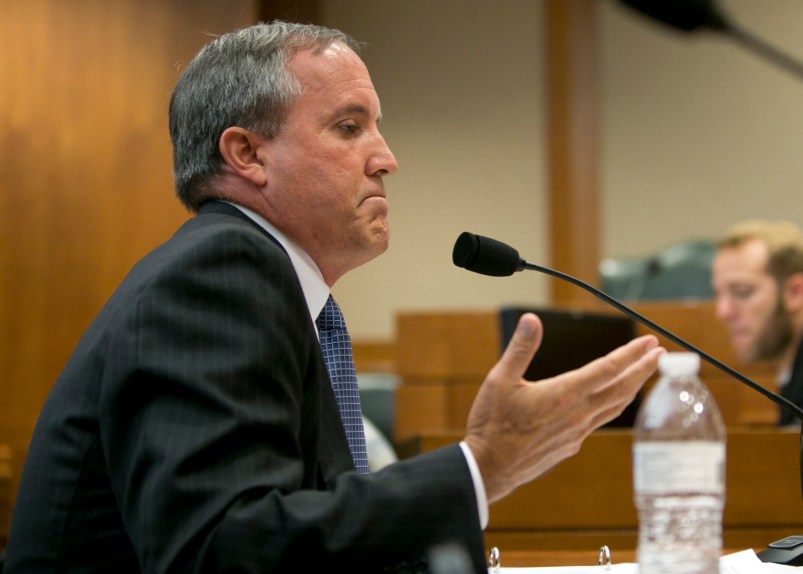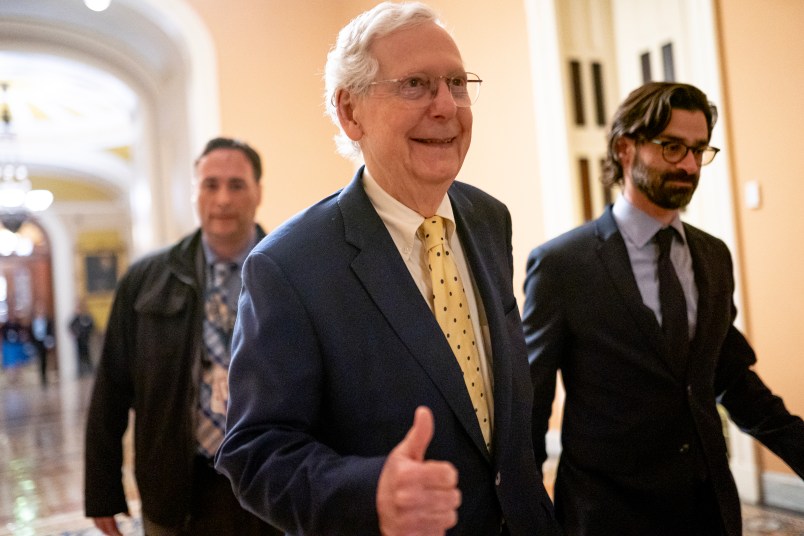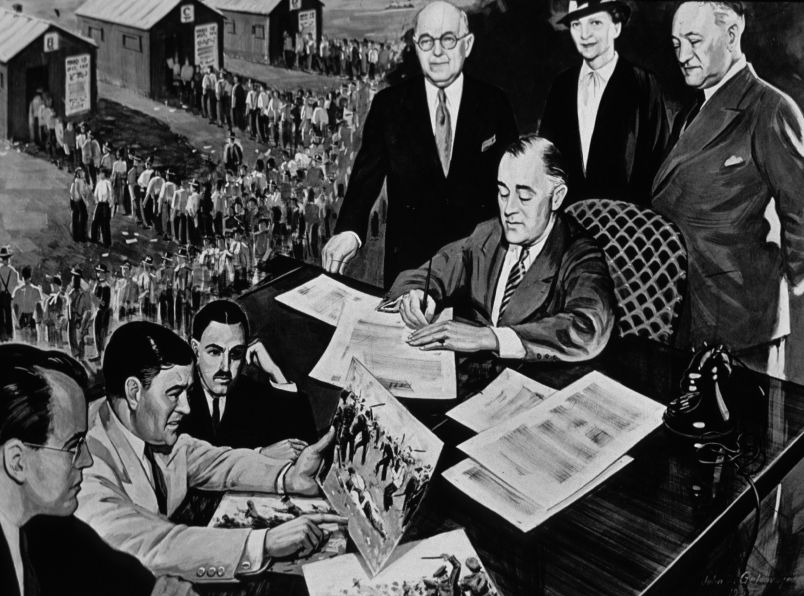President Trump was lucky enough to inherit an economy that saw a record string of months with positive job growth and falling unemployment rates.
But the recent jobs report hinted that this rosy period may be coming to an end.
The U.S. Bureau of Labor Statistics reported that May saw a slowdown in net new additions to payroll and made downward revisions to earlier numbers released for March and April — clear signs that job growth has slowed. Unemployed workers are finding it increasingly difficult to land new jobs, with the share of unemployed workers on the hunt for more than six months rising. Unemployed women are more likely to drop out of looking for jobs than land a job in the following month.
What if this all signals more than just a one-off drop in job creation? What if, instead, we’re heading towards a downturn in the labor market?
The U.S. economy is more fragile than it has been at this point in any previous economic expansion. Though this expansion only needs one more month to be the longest in U.S. economic history, a record number of households are more than 90 days late on their car loan payments. The sale of existing homes continues to fall to new lows, reflecting the difficulty for younger workers to form new households and transition from renters to homeowners. Their low earnings, low savings and high student debt compared to earlier generations all factor in here.
One oft-cited statistic points to just how unstable the finances of most Americans are: nearly 40 percent of households could not withstand an unexpected expenditure of $400 — the cost of just one medical bill or car repair.
The most unnerving point to keep in mind is that we are even less prepared for a sudden slowing of the economy than we were before the Great Recession of 2008.
That crisis taught us a key lesson: how important “automatic stabilizers” are to the economy. Those stabilizers, like unemployment insurance, pump money into households when the economy loses jobs and provides a floor to falling incomes and the subsequent decline in marketplace demand.
These are “automatic” because they do not require new legislation; when more people are eligible, the increase in expenditures happens automatically. In a Congress where Republicans voted against all economic proposals of President Obama during the recovery from the Great Recession, avoiding partisan gridlock is critical. Yet the unemployment insurance system is far weaker today than it was in 2008.
Established as part of the Social Security Act of 1935, the unemployment insurance system was set up as a state-based program. It was modeled off of a handful of states’ experiments to provide unemployment insurance and set tax rates based on employers’ “use” of the system. The idea was to discourage high job turnover and counteract booms and busts in employment.
But the picture is more complicated today. With today’s big data and management systems, it is extremely unlikely firms will have inventory booms and busts. And states now compete based on “business-friendly” environments e.g. low tax rates for unemployment insurance. The result is that states rarely have enough money in their unemployment insurance trust funds to withstand the flood of job losses during a national downturn. This forces the states to borrow money from the federal government to sustain their unemployment insurance system. As in the big downturn of the 1980s, states respond to paying back the federal loans by cutting unemployment benefits.
Currently, a record low share of unemployed workers is drawing unemployment benefits. Several states have cut the maximum time for receiving benefits far below the six months mandated by most states. If a downturn were to happen now, the unemployment insurance system would fail to provide the needed “automatic” boost it delivered in 2008.
There are ready fixes available. We should modernize the unemployment insurance system by making it federal. So too, should the benefit level be joined to the rest of the Social Security Act to discourage the cyclical rise in people claiming Social Security disability insurance rather than staying in the employment system. And we need a way to allow firms to adjust, using unemployment benefits to cut hours rather than workers.
A stability factor missing during the Great Recession was the constancy of state and local investment that we saw in prior downturns. If we fail to act, we will again see the same kind of dramatic loss of public sector jobs and shocking drop in public investment that we witnessed during the Great Recession. The demand for our children’s education, safe streets and reliable roads is not cyclical. Yet, the pressures to balance budgets led to huge cuts in these needed services. And, realizing there was no insurance for them, local governments were slow to build back up. So a bigger underwriting of state and local governments during downturns is need to ensure state and local governments can maintain their commitments — that we will still have safe water to drink, good schools for our children to attend and firemen to put out fires. Protecting against that loss of public jobs will be vital to a robust recovery. And it needs to be as automatic as unemployment insurance.
Let’s hope the latest employment numbers to do not point to a coming downturn. But let’s do more than hope by planning now to fix weaknesses we know will make it harder to recover.
William Spriggs is a professor of economics at Howard University and serves as Chief Economist for the AFL-CIO. He served as Assistant Secretary for the Office of Policy at the U.S. Department of Labor from 2009-2012.









